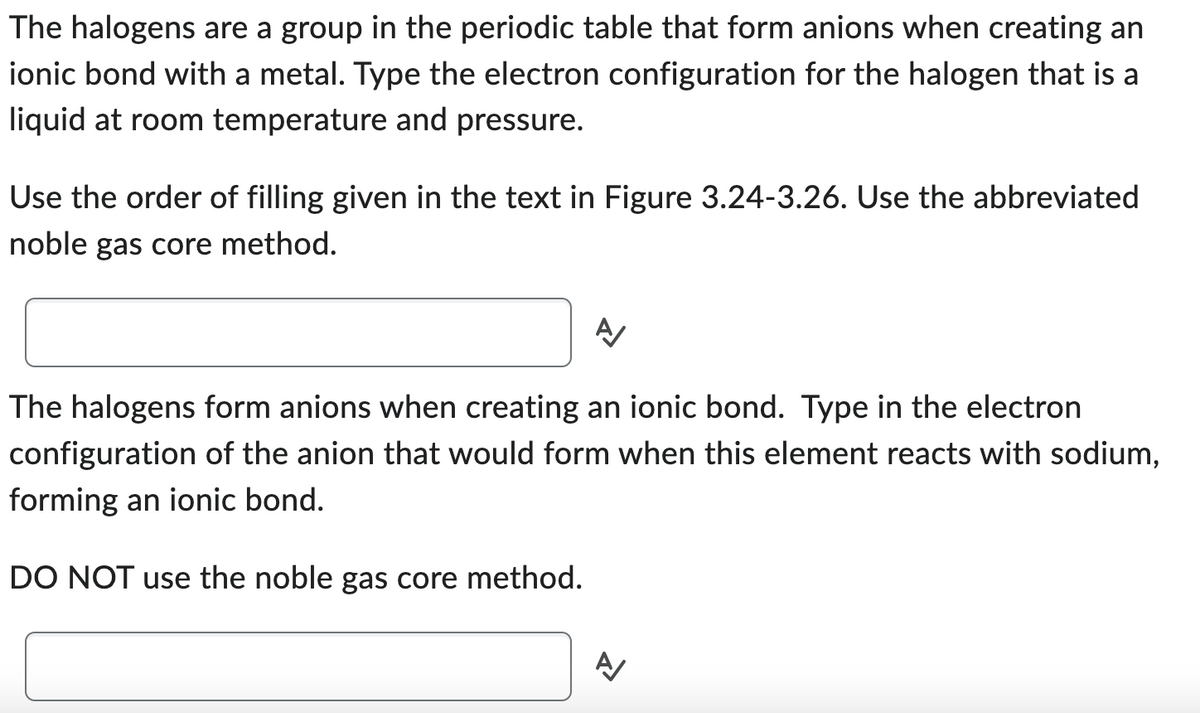The halogens are a group in the periodic table that form anions when creating an ionic bond with a metal. Type the electron configuration for the halogen that is a liquid at room temperature and pressure. Use the order of filling given in the text in Figure 3.24-3.26. Use the abbreviated noble gas core method. A/ The halogens form anions when creating an ionic bond. Type in the electron configuration of the anion that would form when this element reacts with sodium, forming an ionic bond. DO NOT use the noble gas core method.
Types of Chemical Bonds
The attractive force which has the ability of holding various constituent elements like atoms, ions, molecules, etc. together in different chemical species is termed as a chemical bond. Chemical compounds are dependent on the strength of chemical bonds between its constituents. Stronger the chemical bond, more will be the stability in the chemical compounds. Hence, it can be said that bonding defines the stability of chemical compounds.
Polarizability In Organic Chemistry
Polarizability refers to the ability of an atom/molecule to distort the electron cloud of neighboring species towards itself and the process of distortion of electron cloud is known as polarization.
Coordinate Covalent Bonds
A coordinate covalent bond is also known as a dative bond, which is a type of covalent bond. It is formed between two atoms, where the two electrons required to form the bond come from the same atom resulting in a semi-polar bond. The study of coordinate covalent bond or dative bond is important to know about the special type of bonding that leads to different properties. Since covalent compounds are non-polar whereas coordinate bonds results always in polar compounds due to charge separation.
Please do it neat and clean (typed answer only)
Thanks

Step by step
Solved in 2 steps









